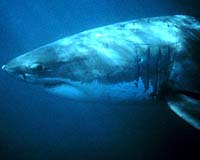| . |  |
. |
London, UK (SPX) May 28, 2010 The world's most ancient frogs may soon be mined to extinction, if the New Zealand government's plans to open up a conservation area for mining go ahead. The primitive Archey's frog (Leiopelma archeyi) and Hochstetter's frog (Leiopelma hochstetteri) are two of the species that inhabit the area of 'high conservation value' on New Zealand's North Island where the mining is planned to take place. Archey's frog is currently ranked top of the Zoological Society of London's (ZSL) EDGE of Existence amphibian list, making it the most evolutionarily distinct and globally endangered amphibian on the planet. Described as a "living fossil", Archey's frog is almost indistinguishable from the fossilised remains of frogs that walked amongst the dinosaurs 150 million years ago. "In the year when reducing biodiversity loss is high on the political agenda, it is inconceivable to think that we'd put the nail in the coffin of some of our rarest and most extraordinary frog species," say Helen Meredith, EDGE of Existence amphibian conservation projects coordinator at ZSL. She adds: "We will be faced with these kinds of decisions again and again in the future. Now is the time to start recognising the long-term value of our natural world over any short-term economic gains." The frog populations have been intensively monitored for over 40yrs, representing the best data set on frog populations in the world. The proposed mining will cut through the heart of these monitoring sites. Dr Phil Bishop, leader of the University of Otago's frog research says "Only four species of frog survive in New Zealand, and this proposed mining activity could cause the extinction of one of New Zealand's native amphibians, and a severe decline in another - a devastating blow to global amphibian conservation." 7,000 hectares of land in the West Coast's Paparoa National Park, Great Barrier Island and the Coromandel Peninsula has been proposed to be considered for mining of coal, gold, iron ore and other rare minerals. The North Island brown kiwi, long-tailed bats, striped geckos and Helm's butterfly are some of the other rare and endangered species found in these protected areas. The New Zealand government is now holding a public consultation on whether the conservation status of the area should be downgraded to allow mining to take place. The closing date for submissions is Thursday, 26 May: www.med.govt.nz/Schedule4 ZSL conservationists are now calling for UK residents to support the protection of New Zealand's unique flora and fauna by submitting to the public consultation process.
Share This Article With Planet Earth
Related Links Zoological Society of London Darwin Today At TerraDaily.com
 Shark attacks spike on new moons, Sundays: study
Shark attacks spike on new moons, Sundays: studyMiami (AFP) May 27, 2010 Sharks are most likely to attack surfers and other unsuspecting swimmers in shallow water, on Sundays, during new moons and especially in August, according to a study released Thursday just in time for summer. Young surfers in black and white bathing suits are most vulnerable to shark attacks or bites, the University of Florida study found. It based its conclusions on observations and st ... read more |
|
| The content herein, unless otherwise known to be public domain, are Copyright 1995-2010 - SpaceDaily. AFP and UPI Wire Stories are copyright Agence France-Presse and United Press International. ESA Portal Reports are copyright European Space Agency. All NASA sourced material is public domain. Additional copyrights may apply in whole or part to other bona fide parties. Advertising does not imply endorsement,agreement or approval of any opinions, statements or information provided by SpaceDaily on any Web page published or hosted by SpaceDaily. Privacy Statement |